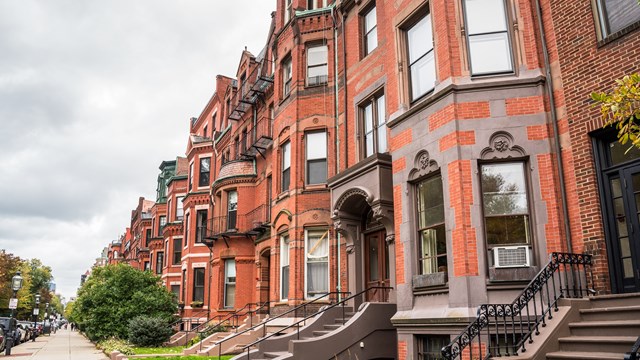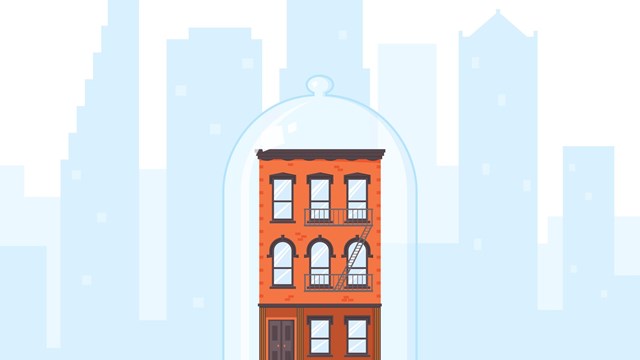Where there's smoke, there's fire, right? Not always.
Smoke and soot damage are the obvious aftereffects of a fire, but they are also the by-products of many other domestic mishaps, including residue build-up in a furnace or chimney, improper use of small appliances, electrical problems, or even clogged dryer ducts. If all the stars align, a mere spark, back draft, or combustible residue can envelop your condominium in billowing clouds of smoke and soot.
Primary Sources of Damage
Residue Buildup in ChimneysIf you're lucky enough to have a fireplace in your condominium, the last thing you probably want to think about is the condition of your chimney. But chimneys require regular maintenance. As wood burns, combustion produces solid byproducts that build up in the chimney or flue as a black, sticky residue known as creosote. Creosote is highly combustible and packed with carcinogenic chemicals that are hazardous to you, your family, and your pets.
The good news is that clean chimneys don't catch fire and won't engulf your condo in black smoke. In a condominium, chimneys may be considered part of the commonly owned property, and therefore the responsibility of the association, or part of the individual unit, and therefore the maintenance responsibility of each unit owner. The information to determine which is the case in a given condominium is readily available in the condo docs, but you can also pose the inquiry to your community's trustees or property manager. Condominiums take fire prevention and chimney maintenance very seriously, and even if your chimney is part of your unit, they may require you to submit certification that the chimney has been inspected each and every year to minimize the risk of fire to surrounding units. So take the time to research who is responsible for chimney maintenance and be sure your chimney is inspected every year by a professional chimneysweep.
Hidden inside your unit's walls (even common walls) are a plethora of electrical wires. Perhaps, at one time or another, you've smelled rubber burning. You felt the walls for heat but sensed nothing. If something were burning, your smoke detector would alert you, wouldn't it? Perhaps. But there is a better way to set your mind at ease. Check your electrical outlets, AC vents, and floor registers. Smoke is attracted to cold surfaces, so if you see a smoke pattern, something's cooking.
If you see a smoke pattern around your furnace, it's a sure sign of false ignition. Oil in the furnace will build up if the unit tries to light...doesn't...tries to light...doesn't. Ultimately, the furnace will set off a false ignition, and if the mixture of air and fuel isn't correct, you'll see smoke or soot in the flue gas. Eventually this will cause soot buildup in the furnace, which, in turn, will create draft problems. To determine oil-burner condition, operating efficiency, and safety, it's wise to retain a heating oil company to perform a soot test. The key to safely operating an oil-fired furnace is to make sure it's well maintained.
Mitigating the Mess
If, in spite of best efforts by unit owners, trustees, managers, and maintenance personnel, a fire does break out, the smoke that results will permeate everything in the condominium, including framing, furniture, ceilings, clothing, fabrics, jewelry, bedding, toys, and electronics. If that weren't bad enough, smoke will make its way into neighboring units, hallways, and elevators. It will also move from floor to floor through common registers, passageways for plumbing, and cracks in walls and ceilings. Ridding your condominium of smoke and its potentially toxic compounds is not a job you want to tackle yourself. In fact, if you try it yourself, your efforts could end up costing you substantially more money.
Removing smoke requires more than opening windows and doors to air out your unit. As a first step, all unsalvageable debris that can contribute to recontamination of cleaned and deodorized areas must be hauled away. Next, smoke-imbued surfaces need to be counterbalanced with neutralizing deodorants. As a final intervention, all contents of the affected units and common areas will require professional cleaning, sanitizing, and deodorizing.
Soot residue must be removed as quickly as possible. As a fire burns, soot residue is carried by humidity, volatile vapors, and air currents, and deposited onto surfaces throughout a building. The residue builds up layer by layer, and often by the time restoration professionals arrive, the lacquer-like soot residue has hardened and is extremely difficult to dissolve and remove. If precious belongings have been coated, the damage can mean they are unsalvageable.
Why is it important to act quickly to mitigate the effects smoke and soot on your condo? Consider the effects of smoke and soot:
· Within minutes, acidic soot residues cause plastics to yellow and porous materials like marble and alabaster to discolor permanently.
· Within hours, metals tarnish, countertops yellow, and furniture finishes discolor.
· Within days, wood furniture requires refinishing, vinyl flooring needs replacing, and upholstery becomes permanently stained.
· Within weeks, restoration costs escalate substantially.
Removing smoke and soot and deodorizing after a fire are jobs for a professional restoration company. The company's certified technicians will have the training, experience, and advanced equipment to quickly and efficiently remove soot and smoke and sanitize and deodorize your fire-damaged condo.
To learn more about the cleanup process, or to find a restoration company near you, log on to www.disasterkleenup.com, the Web site of a network of independent property damage restoration contractors in North America.







Leave a Comment